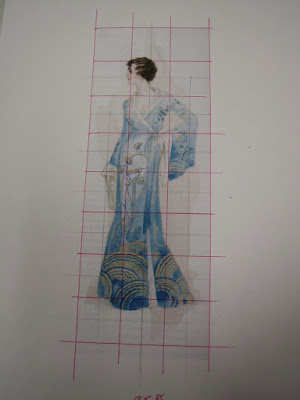 The grid on the watercolour paper was sized appropriately to get the figure in proportion with the paper.
The grid on the watercolour paper was sized appropriately to get the figure in proportion with the paper.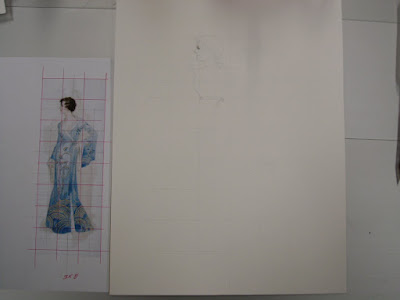 After drawing in all basic outlines, erase the gridlines, very carefully, so you do not disturb the surface of the paper.
After drawing in all basic outlines, erase the gridlines, very carefully, so you do not disturb the surface of the paper.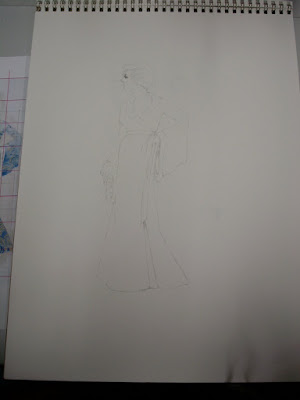 Start with flesh tones. Remember that in watercolour, when you need white, the paper will be your white. This flesh tone is Cadmium Red with a hint of Alizarine Crimson at the cheeks.
Start with flesh tones. Remember that in watercolour, when you need white, the paper will be your white. This flesh tone is Cadmium Red with a hint of Alizarine Crimson at the cheeks.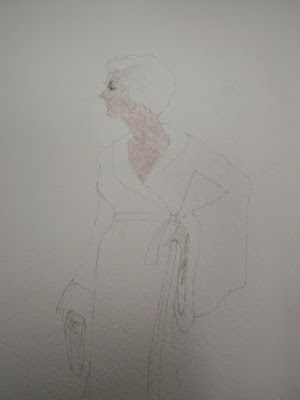 Don't forget the hands, and legs, if necessary.
Don't forget the hands, and legs, if necessary.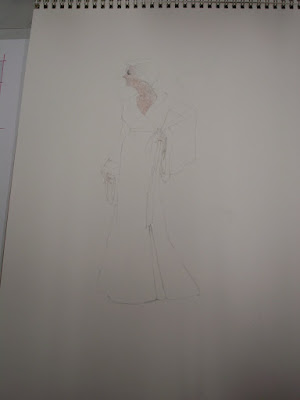 Next, paint the basic overall colour of the garment. In this case, I used both Pthalo Blue and Ultra Marine in a 50/50 mix. Remember that the white is your paper, and where the colour is lighter, that is where you thin out your paint and let the paper show through.
Next, paint the basic overall colour of the garment. In this case, I used both Pthalo Blue and Ultra Marine in a 50/50 mix. Remember that the white is your paper, and where the colour is lighter, that is where you thin out your paint and let the paper show through. 
For example in a man's suit, you would paint the left sleeve and the right front and let them dry. Then you would paint the right sleeve and the left front. This step keeps the seam-lines as natural as possible in your garment, so that you don't end up cartooning them back in with a marker or pencil.
 Be patient.
Be patient.
Let things dry.
 Next, you can paint the hair.
Next, you can paint the hair.Paint the lightest (highlight) colour all over.
LET DRY.
 Once that is dry, then you can paint the low-lights, or darker colours--if there are more than one, repeat this process until you have achieved the look and depth you want.
Once that is dry, then you can paint the low-lights, or darker colours--if there are more than one, repeat this process until you have achieved the look and depth you want.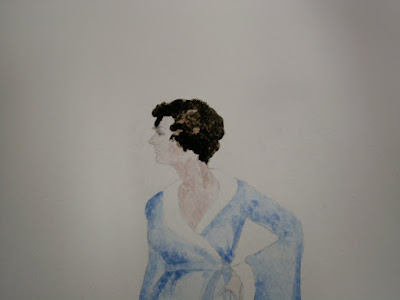 Paint in the background, or ground. By this time, if you have used a variety of colours, your dirty water that you wash your brush out in should suffice for this effect.
Paint in the background, or ground. By this time, if you have used a variety of colours, your dirty water that you wash your brush out in should suffice for this effect.
Any white on the costume needs to be slightly shadowed at this time--just to tell it apart from the background white paper.
 If your rendering has surface detail to the fabric, and it is to be painted, lightly draw this in with pencil now.
If your rendering has surface detail to the fabric, and it is to be painted, lightly draw this in with pencil now. If this detail is to be coloured with a pencil or pen, use that colour now. Be careful that you are finished with all shadows and overpainting--OR know that your pencil or pen you are using is waterproof.
The gold one I am about to use is not waterproof, so I needed to paint the dark blue surface detail first.
This is the case with a lot of gel pens, and free-flowing rolling-ball pens unless they say permanent on them.
 Paint in the darker surface detail.
Paint in the darker surface detail.
You can alternate the paint with the pen as you go--be sure to let your darker paint dry before trying to draw onto wet paper.
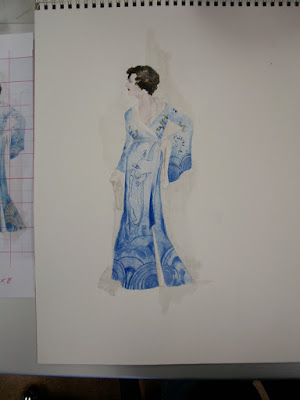 Don't forget the facial details--you can paint those once the flesh tone is dry.
Don't forget the facial details--you can paint those once the flesh tone is dry.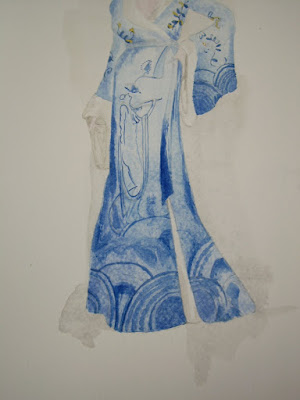 Draw in with the gold pen, on top of the dry paint.
Draw in with the gold pen, on top of the dry paint.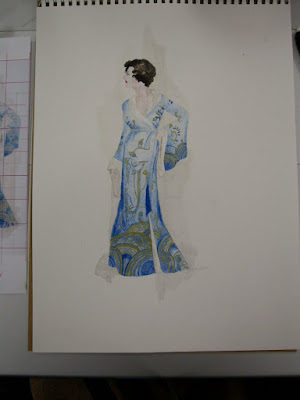 Continue very carefully, working from furthest away from your working hand so as to not drag your hand across the newly penned or painted work.
Continue very carefully, working from furthest away from your working hand so as to not drag your hand across the newly penned or painted work.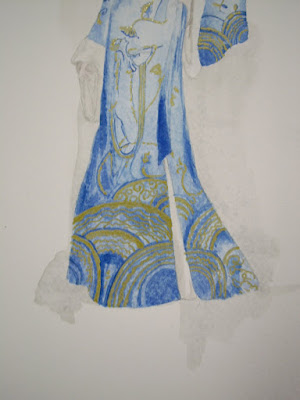 When you are finished with the surface detail, go ahead an go back over some dark lines with pencil. Do NOT outline your whole rendering--it will start to look like a cartoon. Choose your pencil very carefully--a light pencil or a coloured pencil will work well for those places that need a little extra last minute shading.
When you are finished with the surface detail, go ahead an go back over some dark lines with pencil. Do NOT outline your whole rendering--it will start to look like a cartoon. Choose your pencil very carefully--a light pencil or a coloured pencil will work well for those places that need a little extra last minute shading.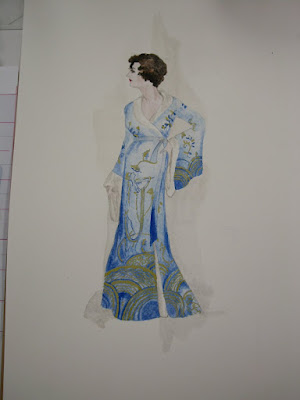
When you are finished painting YOUR work, you should sign it. Your signature is up to you. Its placement should be close to the figure, but not distracting from the figure.
No comments:
Post a Comment